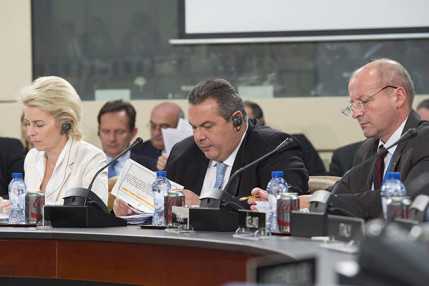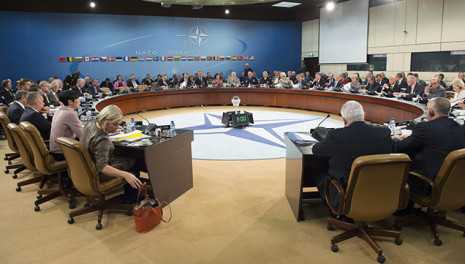NATO command centre to be established in Hungary
Szöveg: Ministry of Defence | 2015. október 9. 15:12On Thursday, 8 October 2015 the NATO Defence Ministers held a daylong meeting at the NATO Headquarters in Brussels. The Hungarian Minister of Defence conducted several bilateral discussions at the meeting.
The representatives of the Visegrád Four countries present at the meeting assured Dr. István Simicskó of their solidarity in connection with the handling of the wave of migration taking place in Hungary. The Lithuanian partners thanked Hungary for having been participating in the Baltic Air Policing Mission with four Gripen fighters since September this year.
The NATO Defence Ministers made a decision about the establishment of forward 40-man NATO Force Integration Units (NFIUs) in Hungary and Slovakia, similarly to the small NATO command centers that have already been set up in the Baltic countries, Poland, Romania and Bulgaria.

According to Dr. István Simicskó, the establishment of the Hungarian NFIU will strengthen NATO’s collective defence and fill an important gap because no NATO command elements have been set up in Hungary since our accession to NATO in 1999. The Minister of Defence said that the NFIU would increase Hungary’s security in a way that does not present threats to anyone.
At the meeting, the Defence Ministers discussed the new direct security threats and challenges to NATO, of which the most important ones remain the still unresolved crisis in Ukraine, the Syrian civil war that has been going on for four years, and the expansion of the Islamic State terror organization in Iraq and Syria. This chaotic situation in some countries of North Africa and the Middle East is the primary cause of the unprecedented migration crisis hitting Europe.

The Ministers gave their approval to a new concept of the NATO Response Force (NRF), which will double the strength of the NRF to around 40,000 troops. Furthermore, a Very High Readiness Joint Task Force (VJTF) will be formed in the NRF structure, ready to deploy anywhere in two days.
The Ministers also addressed some issues that will be on the agenda of the Warsaw NATO Summit next summer. These include NATO’s long-term “adaptation" responses to new threats emanating from the East and the South, because these threats are probably here to stay for a long time. They also exchanged ideas about whether it is necessary – in adapting to the challenges of the 21st century – to consider cyberspace a theatre of war like land, seas or air.
The Defence Ministers also discussed NATO’s possible responses to the new Russian nuclear strategy and the Russian rhetoric that refers to nuclear capabilities more and more frequently.

Speaking about the handling of the migration crisis, Dr. István Simicskó said that the Alliance is closely monitoring the events and is ready to contribute to dealing with the root causes; for example, it has provided assistance for developing the military forces of countries in the region.
A meeting of the NATO-Georgia Commission also took place, where, together with their Georgian counterpart, NATO Defence Ministers discussed the security situation of the Caucasus region, and looked to the possibilities of increasing partnership and defence cooperation between NATO and Georgia.
